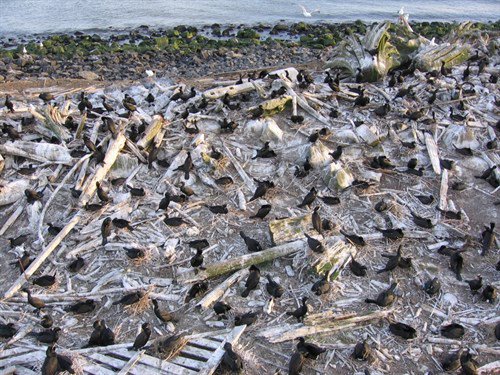Report: Fish-eating birds continue to kill millions of smolts
- June 20, 2014
- John Harrison

Double-crested cormorants nesting on East Sand Island
Caspian terns and double-crested cormorants continue to kill millions of salmon and steelhead smolts in the Columbia River, according to the 2013 draft annual report of Bird Research Northwest, an ongoing research project that is investigating the ecology of colonies of fish-eating birds in the estuary and farther inland in eastern Washington and Oregon.
According to the report, the Caspian tern colony on East Sand Island in the estuary is now the largest in the world, numbering about 7,400 breeding pairs in 2013, up from 6,400 pairs in 2012. These birds killed an estimated 4.6 million smolts in 2013, similar to 2012.
Meanwhile, the double-crested cormorant colony on East Sand Island totaled about 14,900 breeding pairs in 2013, making it the largest double-crested cormorant colony ever recorded on East Sand Island, and also the largest known breeding colony of the species anywhere. The colony grew by about 15 percent since 2011. These birds are estimated to have killed 16.3 million smolts in 2013, about the same as in 2012.
The U.S. Army Corps of Engineers is studying possible strategies to limit the size of bird colonies on the island.
Bird Research Northwest also studies fish-eating birds in the interior Columbia Basin, including Caspian terns, double-crested cormorants, white pelicans, and gulls. While the size of Caspian tern and cormorant colonies in the Columbia Plateau region of central Washington declined from 2012, nesting success improved. Additionally, gulls are posing an increasing predation problem in that area, according to the report.



